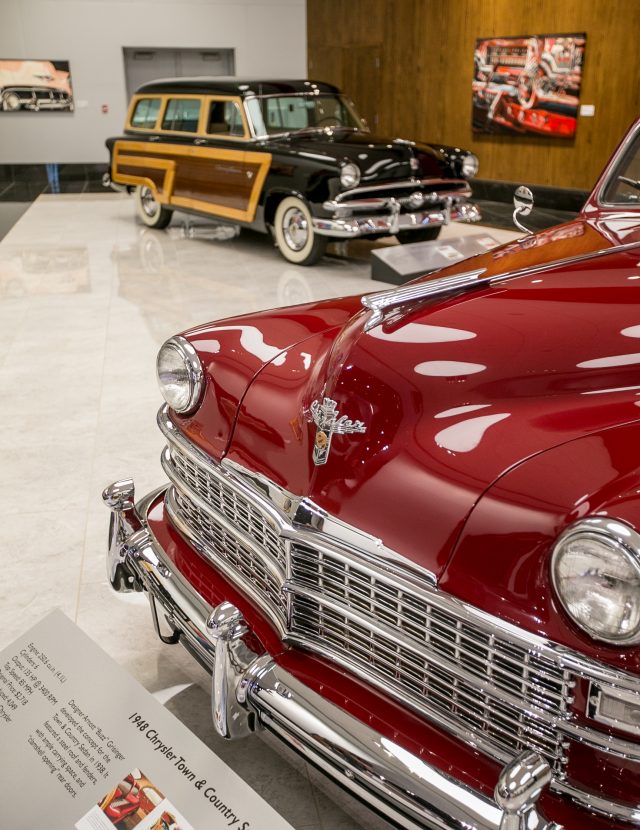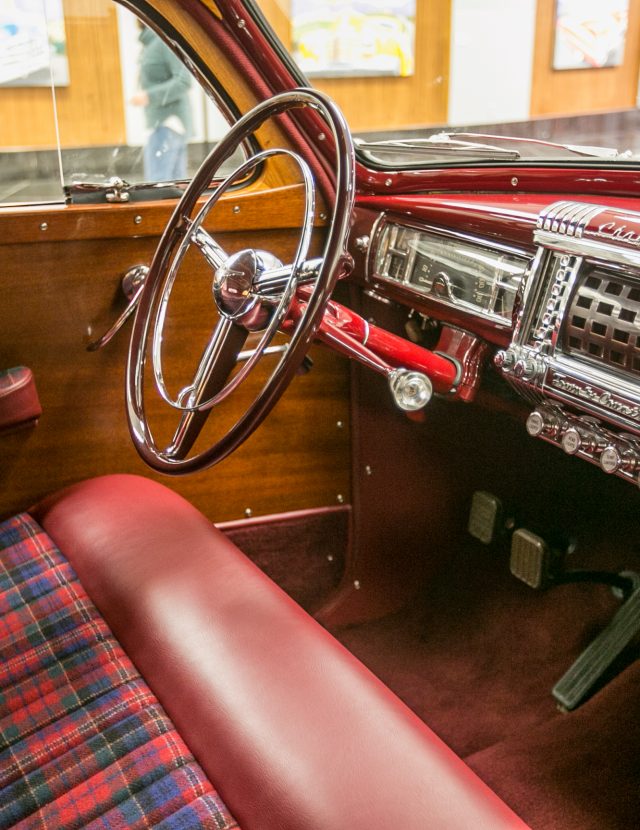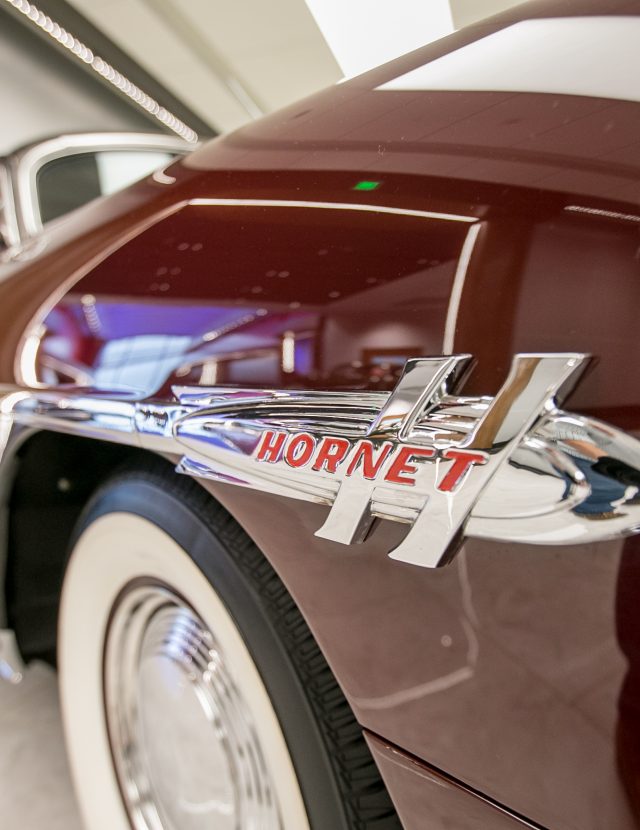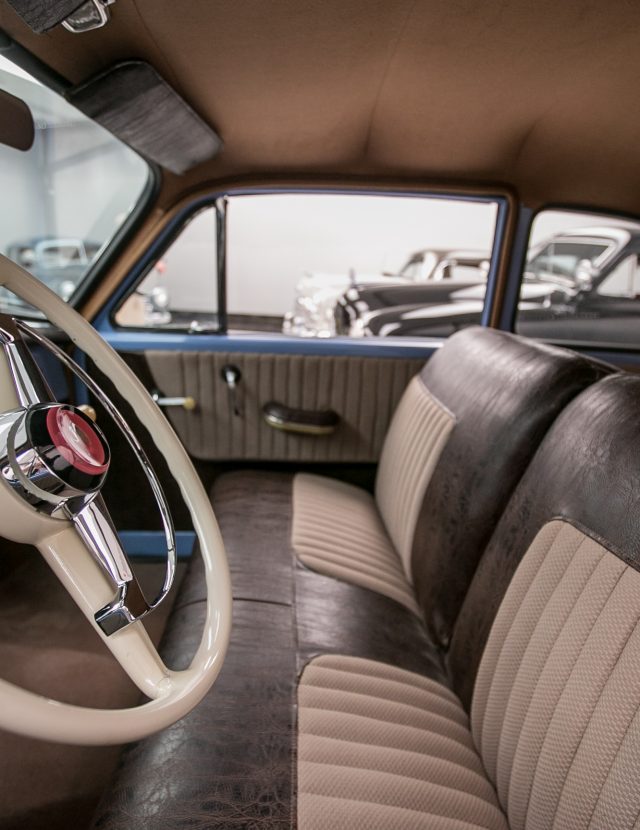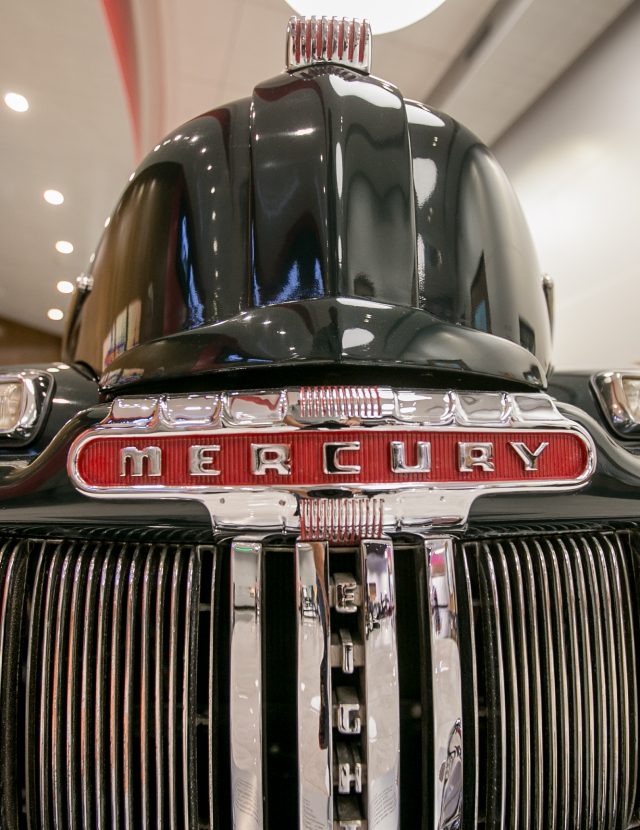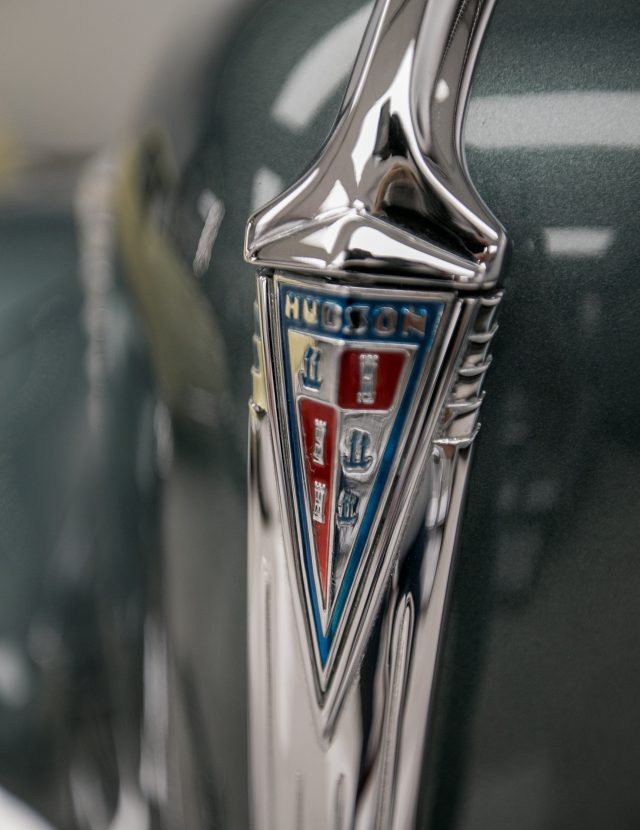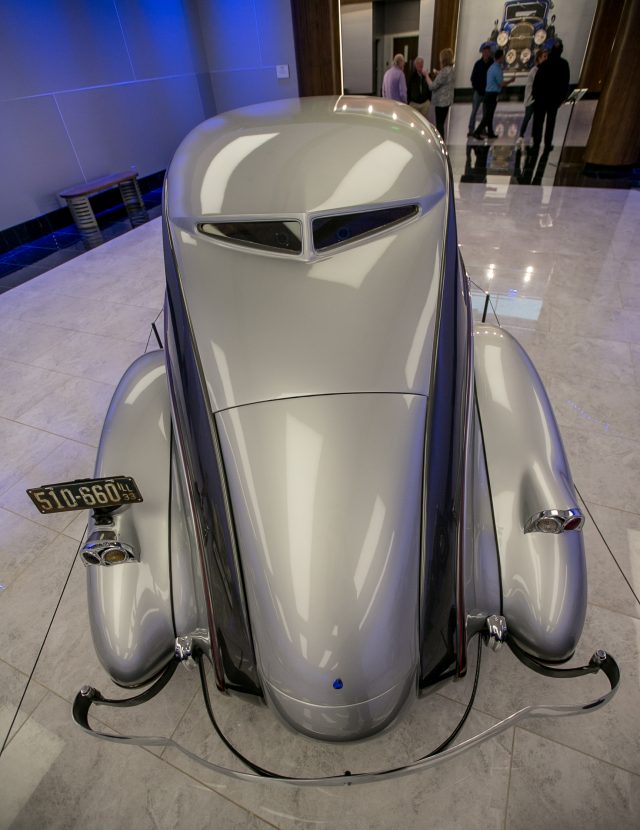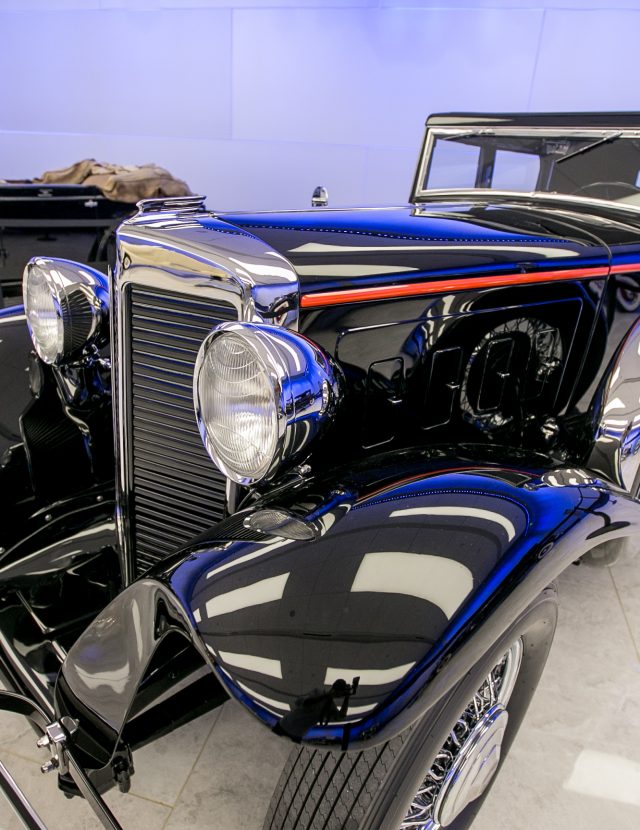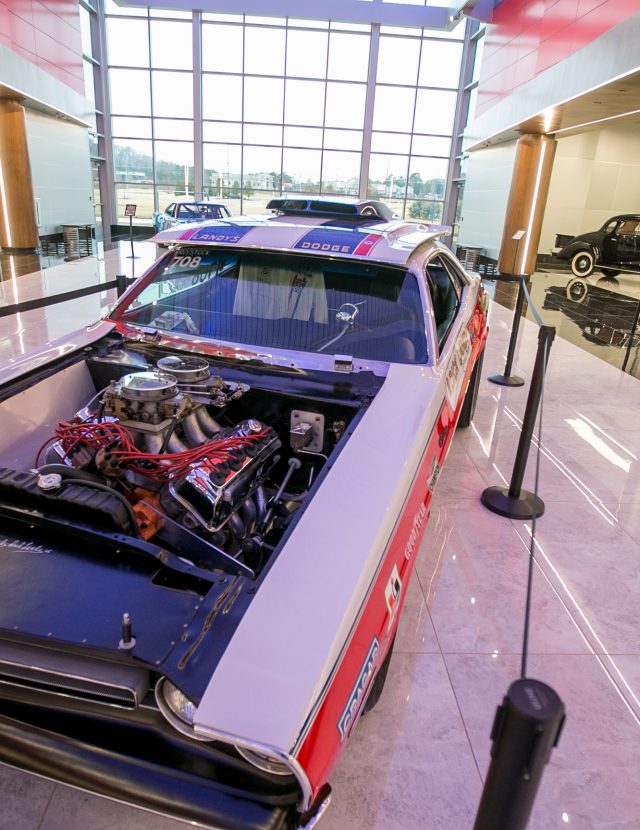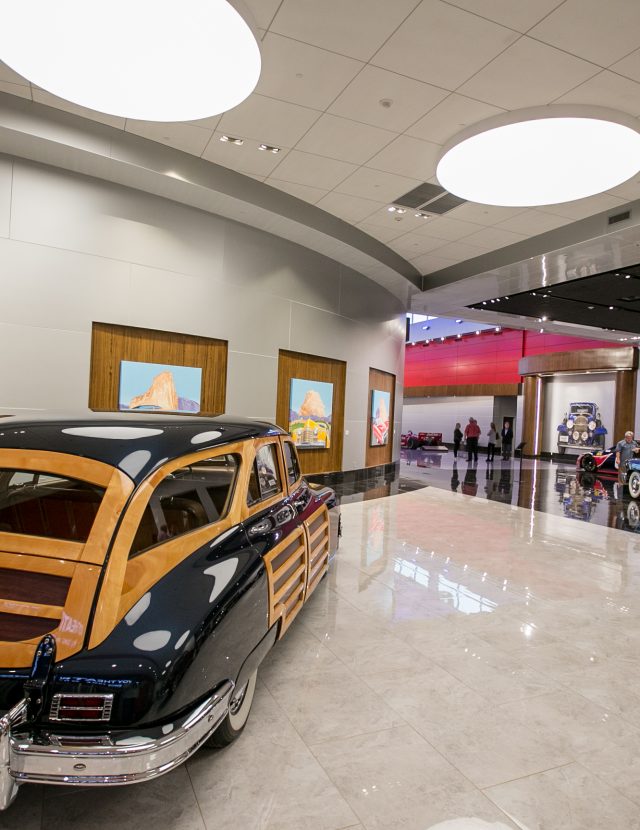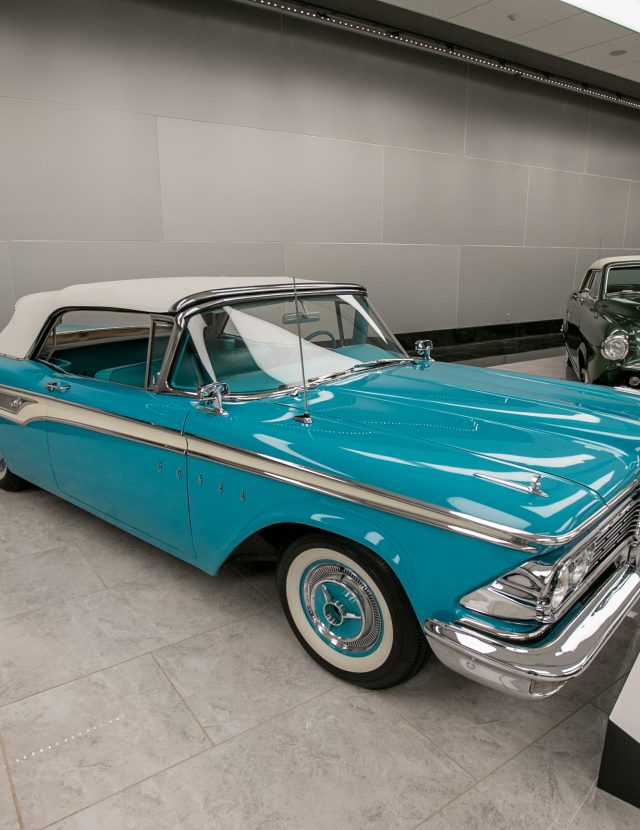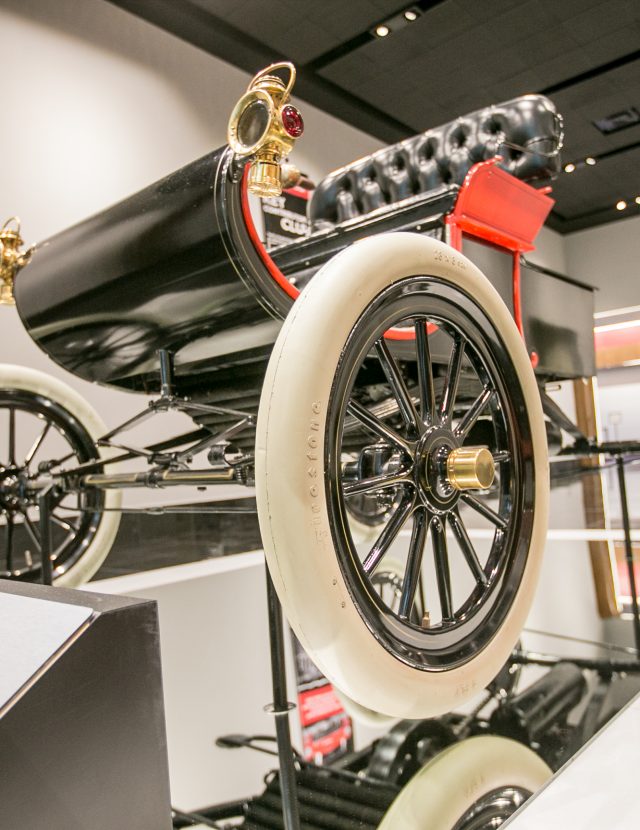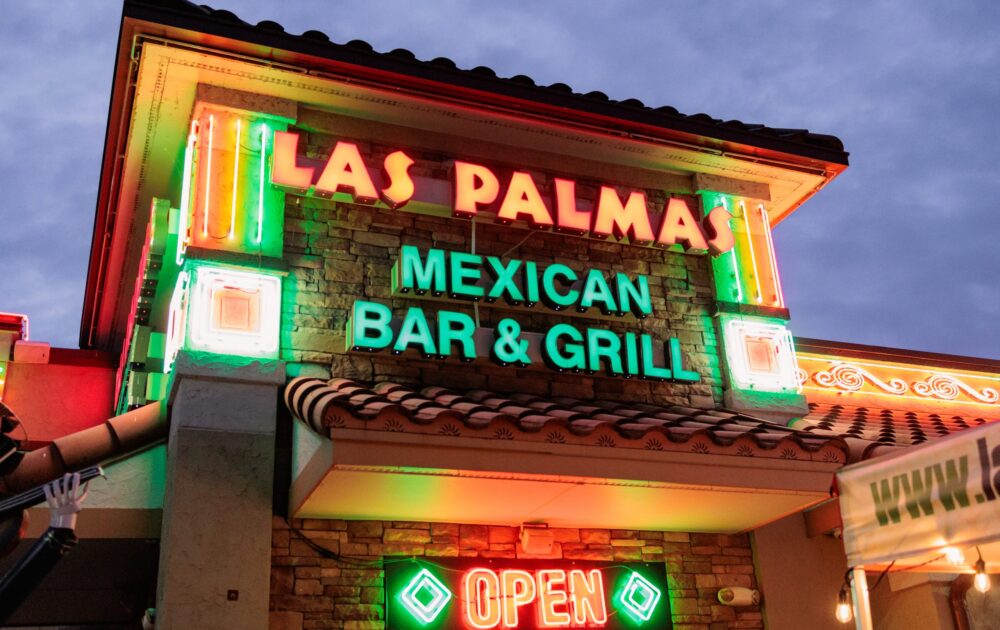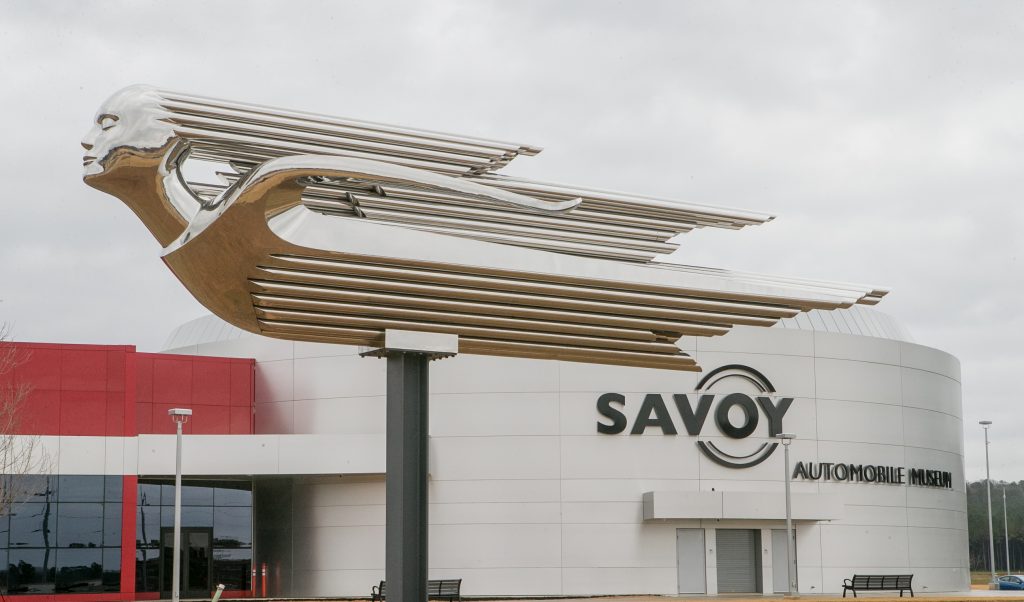
Photos by Rob Smith and Savoy Automobile Museum
Cartersville is quickly gaining a reputation as Northwest Georgia’s museum town. This is largely due to the work of Georgia Museums, Inc., a nonprofit foundation that is the brainchild of an anonymous family/donor. The first three of GMI’s programs were the Booth Western Art Museum, the Tellus Science Museum (with its Bentley Planetarium), and the Bartow History Museum. And these are no rinky-dink affairs either. They are world-class institutions with all the bells and whistles one might expect to find in Chicago or New York City or London. GMI’s final (for now) offering to the public is the newly opened Savoy Automobile Museum.
Style, history, and beauty on display
Entering the Savoy Automobile Museum’s Great Hall is a jaw-dropping experience. The combination of stunning architecture and the presence of rare, sparkling automobiles can stop visitors in their tracks. Whether people are car enthusiasts or not, there is plenty to hold their attention. They may want to spend a couple of hours looking around or while away the entire day, studying every detail of what the museum has to offer.
The Savoy is divided into several different displays. First, there’s the Savoy Collection. These are classic cars of a wide variety of makes, models, and eras. It’s a semi-permanent collection, meaning some of the automobiles reside full-time at the museum and others rotate in and out of the display for the sake of variety.
American Racing is a collection that showcases race cars, some on loan, some donated. Presently, there’s a drag racer, a Bonneville Salt Flat car, an Indy car, and a 2018 NASCAR (#66), which was driven by Cartersville resident Mark Thompson, who at age 66 was the oldest driver to ever compete at the Daytona 500. A stand-out in this area is one-of-a-kind: Richard Petty’s 1970 Plymouth Superbird.
The Great American Classics collection displays the grand cars from the 20th century’s golden age of automobile design and manufacturing. These cars are long, heavy, ornamented, and audacious. They are cars with attitude, like Auburn Speedster, Packard, Stutz, and Duesenberg.
Sure to become a favorite for visitors are the Woodies: glossy, wood-accented beauties that epitomize a Norman Rockwell image of the American family. These charming station wagons speak of a time when interstate freeways were new, and people set out to explore on long cross-country adventures.
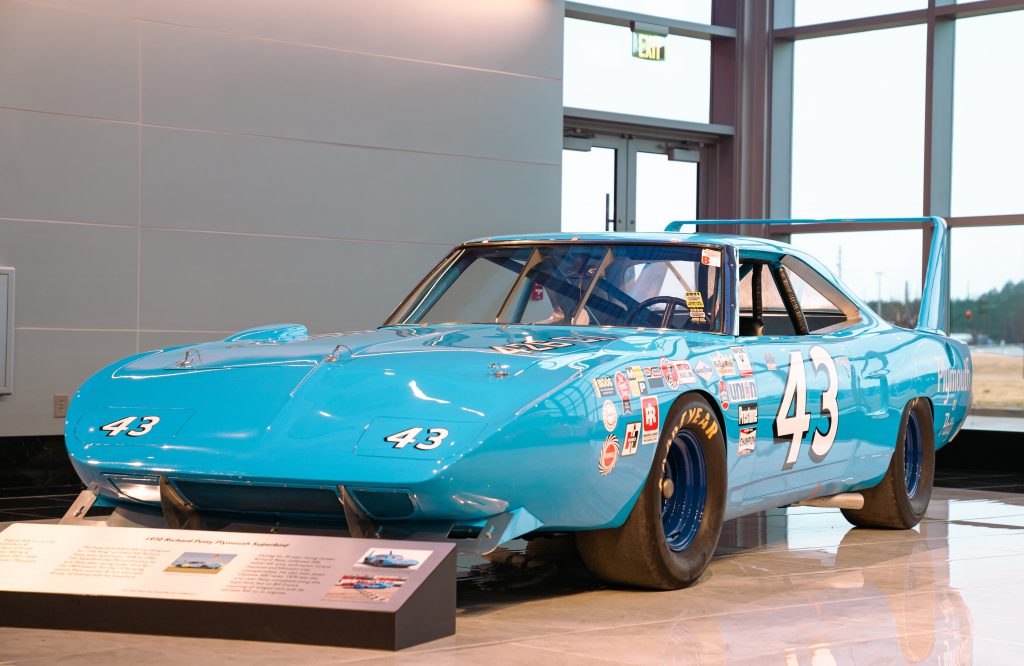
The iconic 1970 Richard Petty Plymouth Superbird
Then there are the Orphans, a collection that is both fascinating and bittersweet. These cars are a reminder of a time when the big fish gobbled up the small fish. Detroit’s Big Three dominated the automobile market to the point that they put many upstart manufacturers out of business. Thanks to the Savoy, however, examples of these car companies’ work are still available for the public to see and appreciate. On display are cars from such defunct companies as Nash, Hudson, Frazer, and Kaiser. There is even a Davis Divan three-wheeler.
“This is a world-class automotive museum,” says Tom Shinall, director of development for the Savoy. “We’re not just a collection; we’re much more than that. We have membership programs, sponsorship opportunities—things that go far beyond just showcasing cars.” Shinall goes on to explain that Savoy seeks to connect people with the memories and cultural influences they can share with automobiles.
Cars are not the only collection at the Savoy; there’s also an impressive display of paintings of automobiles hanging on the walls throughout the museum. Shinall says, “Many museums do automobilia for their interior décor. Metal signage, nostalgic items, etc. Many do that extremely well. Since we have an art museum as a sister museum, we know a lot of artists, so we decided to use those connections to gather our own art collection of automotive art.”
The planners and managers of Savoy are grateful to many in Cartersville and Bartow County for their help and encouragement in getting the museum off the ground. Macra Adair, Savoy’s executive director, says, “The community has gone above and beyond in support of all our museums, and the support for the Savoy has been overwhelming.”
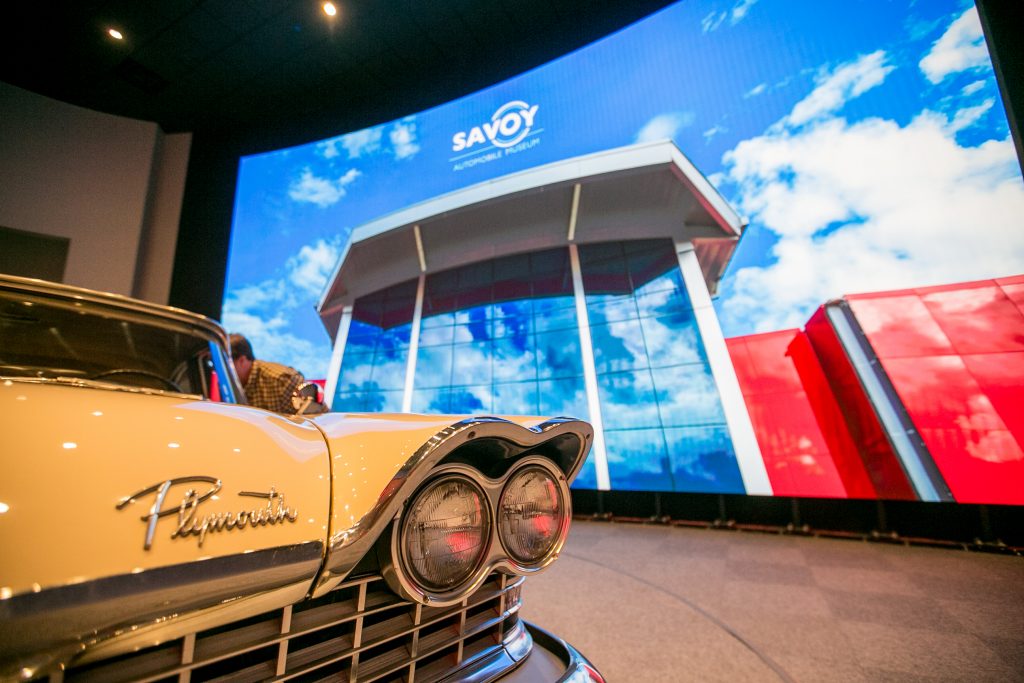
A shining symbol
The approach to the entrance of the Savoy is dominated by a sparkling beauty: a huge polished stainless-steel sculpture called Spirit of Speed. The impression this work of art gives is that of a massive hood ornament. The sculpture, which stands some 26 feet in the air and is 40 feet long, is the work of Irish sculptor Linda Brunkner (now based in Spain). As the work’s name suggests, it was designed to evoke the impression of speed.
Brunkner, whose work is known for its combination of gracefulness and grand scale (Spirit of Speed weighs 7 ½ tons), has an international appeal, showing in such diverse places as Ireland, California, and China.
Georgia Museums, Inc. has an established tradition of using large-scale art and objects outdoors to express the essence of what visitors will find indoors. For instance, the Booth Western Art Museum displays oversized bronze sculptures of men on horseback, and the Tellus Science Museum features heavy machinery and equipment that tie into the mining history of the area.
Brunkner’s Spirit of Speed serves the same purpose for the Savoy, telling people they can expect a high-quality experience from their visit. “When we were planning the museum,” Shinall says, “we knew we needed a statement piece, beyond the building itself. Spirit of Speed shows accents of different classic hood ornaments; she’s Brunkner’s rendition of a mascot for the Savoy.”
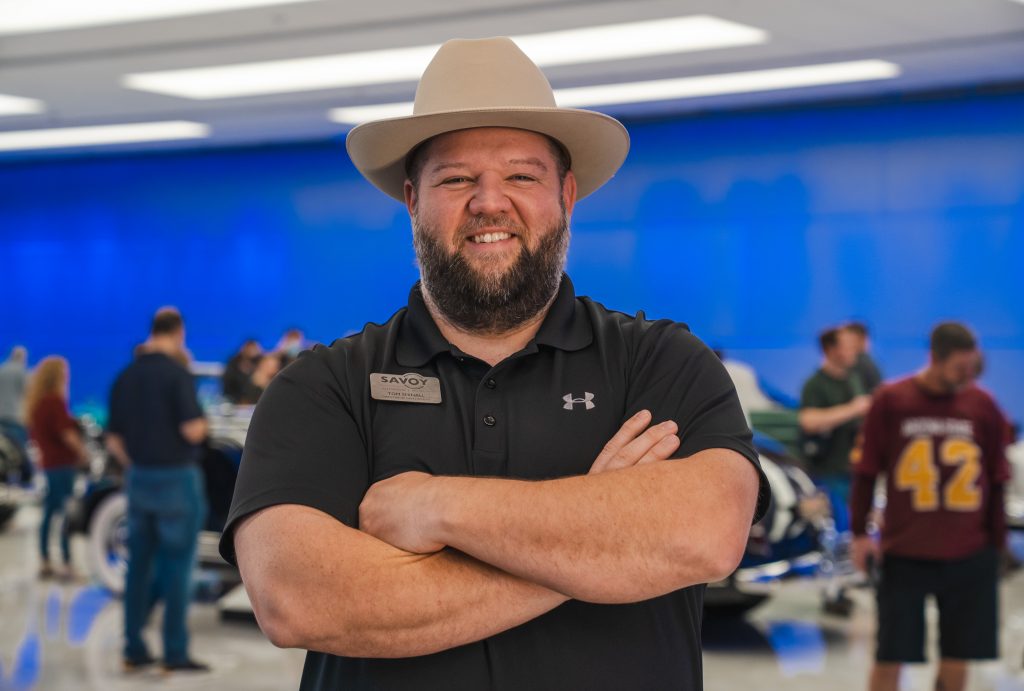
What’s in a name?
When it came to naming the new automotive museum, the original idea was to ask the public to submit their suggestions, making it a community contest of sorts. Then in 2018, as workers toiled through the arduous task of clearing parts of the thirty-seven acres of land to build the museum, they came across a surprising (and serendipitous) discovery: the rusted shell of a 1954 Plymouth Savoy. The car had been there so long it was half-buried in the earth.
It had trees growing through it and was choked with vines and brush. The workers removed the foliage, cut out the trees, and literally pulled the ruined car from the ground. Though derelict, the car was seen as a kind of buried treasure, a sign too obvious to ignore. In its honor, the museum was given the name Savoy.
The old relic was beyond restoration, but the planners decided that instead of discarding it they would display it proudly. And there it is today, a ghost from the past, sitting just outside the museum for all to see. Presently, an investigation is underway to uncover the car’s history, a search for old photographs and documents. “We are part of that car’s story,” Shinall says, “and we intend to find out what that story is.” Meanwhile, the old Plymouth Savoy serves as a curiosity, an inspiration, and a reminder of the tenuous nature of automotive history.
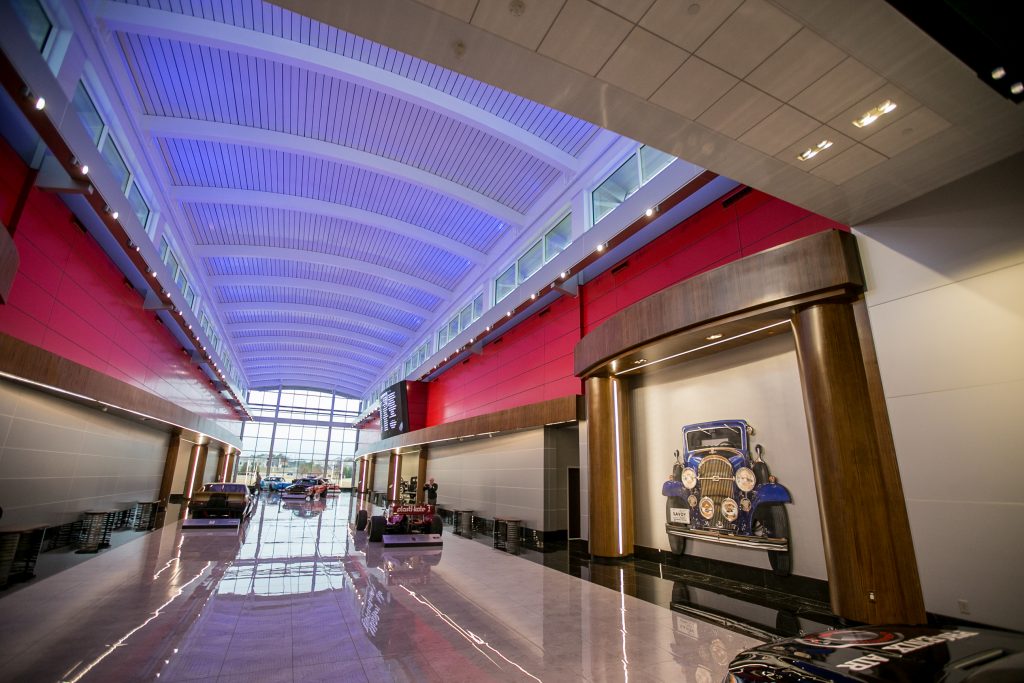
An architectural legacy
The visionary designer behind the Savoy was Frank Bergman. He was also the principal architect of the Booth Western Art Museum and the Tellus Science Museum, as well as various major projects worldwide. Bergman traveled across the US and internationally looking for inspiration for his Savoy designs. (In fact, he visited so many automotive museums that he began putting together a coffee table book on the subject.) “There are a lot of automotive museums around the world, each unique in its own right,” Shinall says, “Some are glorified garages, others are ground-up builds or warehouses. Frank took note of what worked well in these museums and what did not. He borrowed the sleek, modern styling of American museums and combined it with the more traditional elements and natural textures used in Europe.”
Sadly, Frank Bergman did not live to see the fruition of his work on the Savoy. He passed away in January 2021, but, as Shinall puts it, “Frank’s legacy is embedded in every wall, every nail that went into this place. It’s truly a testament to his vision and genius.”
Looking down the road
The museum’s offerings will continue to evolve and expand as time goes on. The presentation theater, for instance, is a multi-use venue, perfect for any number of events: lectures, workshops, auctions; there’s even a wedding planned there for this January. The theater features stadium seating and a huge curved digital screen, the largest in the Southeast. “We can use this space to host monthly lectures series,” Shinall says, “bringing in experts from around the country to talk about the cars on display and automotive history.” The museum also has other spaces they can rent out for private events.
Bruce Patton, Savoy’s director of curatorial services, says, “We’ll have rotating exhibits, some borrowed, some donated, and, of course, more of Savoy’s own collection as it grows. We want to change things up about every four months.” And that’s just indoors. Savoy has plans of using its ample outdoor acreage as well. Patton adds, “We look forward to parking cars in the grass on the property and hosting cars shows.” Shinall agrees, saying, “We don’t want to become stagnant. We want to always be changing, growing, keeping it fresh.”
Visit Savoy Automobile Museum at:



